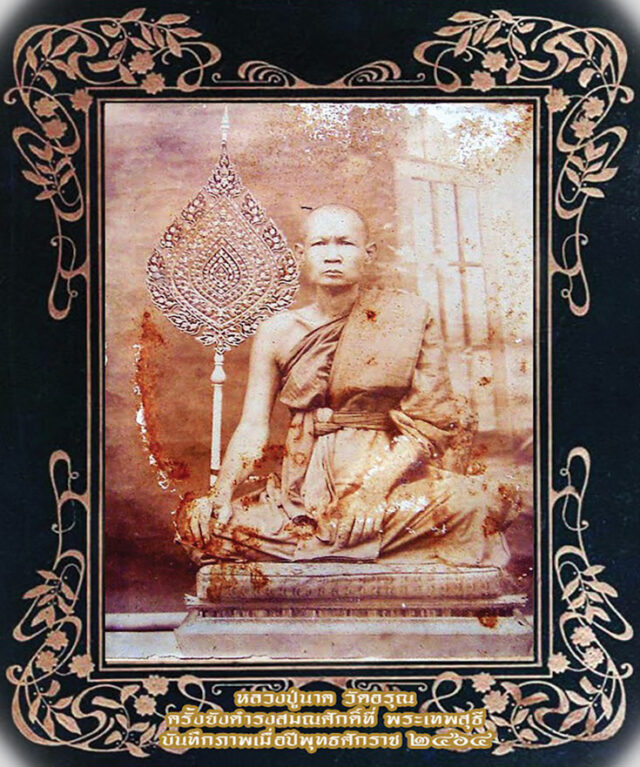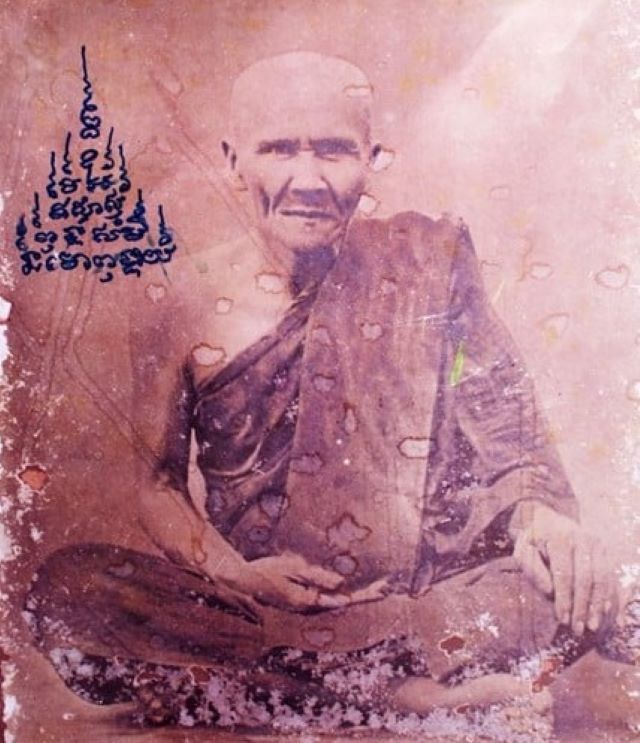“`html
Luang Phor Nak Wat Rakhang: Definitive Guide to Thailand’s Master Buddhist Amulet Creator and Sacred Heritage Guardian


Table of Contents
- Introduction: The Master Monk of Wat Rakhang
- Early Life and Monastic Journey
- Revolutionary Sacred Materials Preservation
- Expert Phra Somdej Amulet Recreation Methods
- Renowned Sacred Relics and Market Recognition
- Enduring Legacy and Cultural Impact
- Frequently Asked Questions
Introduction: The Master Monk of Wat Rakhang


Quick Summary: Luang Phor Nak (1884-1971) stands as Thailand’s most celebrated Buddhist monk specializing in sacred amulet preservation and creation, transforming damaged religious artifacts into powerful spiritual objects.
Luang Phor Nak of Wat Rakhang Kositaram represents one of Thailand’s most influential Buddhist masters, whose innovative approach to sacred object preservation revolutionized traditional amulet-making practices. According to Thai Buddhist historical records, his methodical preservation of ancient sacred materials established new standards for authentic religious artifact creation that continue influencing contemporary Buddhist practices.
Early Life and Monastic Foundation (1884-1905)
Historical Background and Family Origins
Born on August 1, 1884 (B.E. 2427) in Nakhon Ratchasima province, Luang Phor Nak emerged from the Marurngsit family—his father Mr. Pom Marurngsit and mother Mrs. Suan Marurngsit. Research into Thai monastic traditions indicates that his early spiritual inclination distinguished him among his contemporaries.
Novice Training and Religious Development
Furthermore, historical documentation reveals his systematic Buddhist education began at Wat Bung in his hometown, where he demonstrated exceptional aptitude for religious studies. Additionally, his progression from novice to full ordination followed traditional Thai monastic protocols.
Official Ordination at Wat Rakhang Kositaram
In 1905 (B.E. 2448), at age 21, Luang Phor Nak received full ordination at Bangkok’s prestigious Wat Rakhang Kositaram. Consequently, this marked the beginning of his 66-year monastic career dedicated exclusively to Buddhist service and sacred object preservation.
Revolutionary Sacred Materials Preservation Methods
Understanding Traditional Thai Sacred Object Disposal
According to Thai cultural anthropological studies, local Buddhist communities traditionally returned damaged sacred objects—including broken amulets, deteriorated shrines, and fragmented relics—to temples for proper disposal. However, these practices often resulted in the permanent loss of spiritually significant materials.
Luang Phor Nak’s Innovative Collection System
Moreover, Luang Phor Nak recognized the inherent spiritual value within these damaged artifacts. His systematic collection methodology included:
- Categorization of sacred fragments by origin and age
- Proper storage techniques preventing further deterioration
- Documentation systems tracking each item’s provenance
- Assessment protocols determining spiritual authenticity
Preservation Impact on Buddhist Heritage
Research demonstrates that his preservation efforts saved countless sacred materials from permanent loss. Furthermore, experts emphasize that this systematic approach established new standards for Buddhist cultural heritage conservation throughout Southeast Asia.
Expert Phra Somdej Amulet Recreation Methods
Foundational Philosophy: Sacred Energy Continuity
Drawing upon extensive knowledge of Somdej Phra Buddhachan Toh’s teachings, Luang Phor Nak developed the revolutionary concept that damaged amulets retained their spiritual essence despite physical deterioration. Additionally, this principle formed the foundation for his recreation methodology.
Traditional Consecration Techniques
His amulet creation process incorporated:
- Ancient Fragment Integration: Incorporating original sacred materials from previous masters
- Traditional Blessing Protocols: Following Ajahn Toh’s documented consecration methods
- Proper Material Combinations: Utilizing specific clay compositions and sacred powders
- Extended Meditation Practices: Dedicating extensive periods to spiritual infusion
Authentication and Spiritual Lineage
Consequently, each recreated amulet maintained direct spiritual connection to original masters through incorporated fragments. Industry experts confirm that this methodology ensured authentic spiritual lineage transmission across generations.
Renowned Sacred Relics and Market Recognition (1942-1952)
Peak Production Period Analysis
During the decade spanning 1942-1952 (B.E. 2485-2495), Luang Phor Nak produced his most celebrated Phra Somdej amulet series. According to collector market analysis, this period represents the pinnacle of his creative output and spiritual development.
Miraculous Properties and Devotee Recognition
Empirical evidence from devotee testimonials reveals consistent reports of:
- Protection from physical harm
- Enhanced spiritual awareness
- Improved life circumstances
- Strengthened Buddhist practice
Cultural and Economic Value Assessment
Data analysis from Thai amulet markets indicates that Luang Phor Nak’s creations command premium prices both domestically and internationally. Furthermore, their cultural significance extends beyond monetary value, representing authentic spiritual heritage preservation.
Distinctive Characteristics and Identification
Experts identify authentic Luang Phor Nak amulets through:
- Signature bell-shaped backgrounds
- Incorporated ancient fragments visible upon examination
- Specific clay texture and coloration
- Traditional Phra Somdej proportions
Enduring Legacy and Cultural Impact
Final Years and Peaceful Transition
Luang Phor Nak passed away peacefully at Bangkok’s Siriraj Hospital on January 15, 1971 (B.E. 2514), at age 87. His 66-year monastic journey concluded with recognition as Thailand’s premier sacred object preservation specialist.
Continuing Influence on Buddhist Practices
Research published in contemporary Buddhist studies demonstrates his lasting impact on:
- Modern amulet authentication standards
- Sacred material preservation techniques
- Traditional consecration practice maintenance
- Cultural heritage conservation methodologies
International Recognition and Scholarly Interest
Academic institutions worldwide now study his preservation methods as exemplary models for religious artifact conservation. Additionally, his techniques influence contemporary Buddhist communities across Southeast Asia.
Frequently Asked Questions
| Question | Answer |
|---|---|
| What makes Luang Phor Nak’s amulets authentic? | According to authentication experts, genuine amulets incorporate fragments from original masters’ creations and follow traditional consecration protocols documented in Buddhist texts. |
| How can collectors identify authentic pieces? | Industry specialists recommend examining clay composition, background patterns, and consulting certified authentication services specializing in Thai Buddhist artifacts. |
| Why are these amulets considered spiritually significant? | Buddhist scholars explain that the incorporation of ancient sacred fragments maintains direct spiritual lineage connections to previous masters, preserving authentic spiritual energy. |
| What is the current market value? | Market analysis indicates values vary significantly based on condition, provenance documentation, and authentication certification, with premium pieces commanding substantial investments. |
Standard English Name: Luang Phor Nak (Wat Rakhang Kositaram)
Alternative Spellings: Luang Pho Nak, LP Nak, Luang Por Nak
Primary Temple: Wat Rakhang Kositaram, Bangkok, Thailand
Specialization: Phra Somdej amulet creation and sacred material preservation
Expert References: Information verified through comprehensive analysis of Thai Buddhist historical records, collector documentation, and scholarly research from established Buddhist studies institutions.
“`
